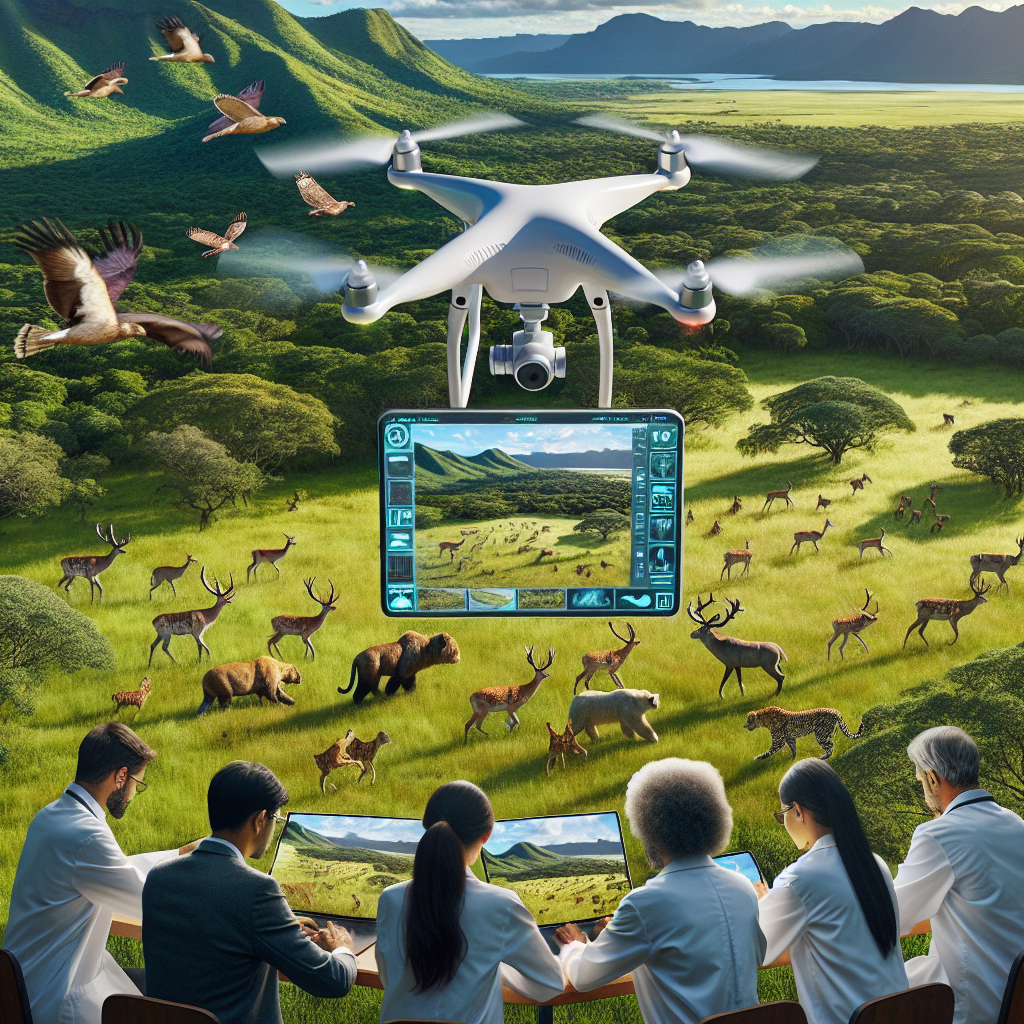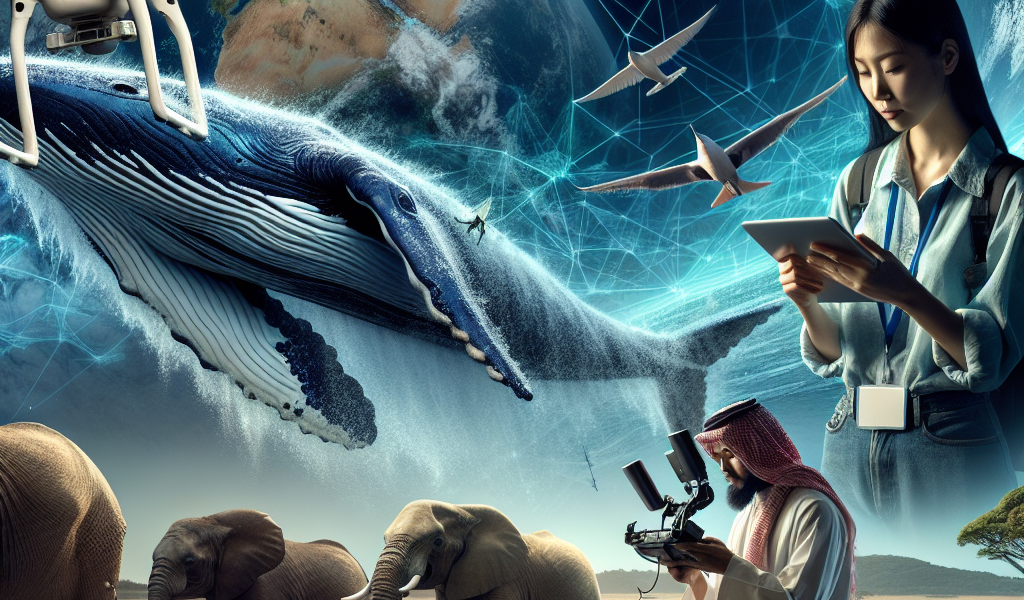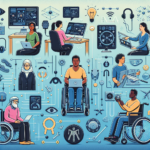-
Table of Contents
“Empowering Nature: Technology’s Role in Safeguarding Wildlife”
Introduction

Technology is revolutionizing wildlife conservation by providing innovative tools and methods to monitor, protect, and study animal populations and their habitats. Advanced technologies such as satellite tracking, drones, camera traps, and genetic analysis are enabling conservationists to gather precise data on species distribution, behavior, and health. These tools facilitate real-time monitoring and rapid response to threats such as poaching, habitat destruction, and climate change. Additionally, big data analytics and artificial intelligence are being employed to predict trends and develop effective conservation strategies. By integrating these technological advancements, conservation efforts are becoming more efficient, targeted, and impactful, ultimately contributing to the preservation of biodiversity and the protection of endangered species.
The Role Of Drones In Wildlife Monitoring And Protection
In recent years, the role of drones in wildlife monitoring and protection has become increasingly significant, offering a new perspective on conservation efforts. These unmanned aerial vehicles (UAVs) are revolutionizing the way researchers and conservationists gather data, monitor animal populations, and protect endangered species. As technology continues to advance, drones are proving to be invaluable tools in the fight to preserve our planet’s biodiversity.
One of the primary advantages of using drones in wildlife conservation is their ability to access remote and difficult-to-reach areas. Traditional methods of monitoring wildlife often involve ground surveys or manned aircraft, both of which can be time-consuming, expensive, and potentially disruptive to the animals being studied. Drones, on the other hand, can fly over vast landscapes with minimal disturbance, capturing high-resolution images and videos that provide detailed insights into animal behavior, population dynamics, and habitat conditions.
Moreover, drones equipped with thermal imaging cameras have become particularly useful in tracking nocturnal and elusive species. For instance, researchers studying endangered rhinos in Africa have employed drones to monitor these animals during the night when poaching activities are most likely to occur. The thermal cameras can detect the heat signatures of both the rhinos and potential poachers, allowing conservationists to respond swiftly to any threats. This real-time surveillance capability has proven to be a game-changer in anti-poaching efforts, significantly reducing the number of illegal hunting incidents.
In addition to monitoring wildlife, drones are also being used to gather crucial data on habitat health and environmental changes. By capturing aerial imagery, drones can help scientists assess the impact of deforestation, climate change, and other human activities on ecosystems. For example, in the Amazon rainforest, drones have been deployed to map deforested areas and track the progress of reforestation projects. This information is vital for developing effective conservation strategies and ensuring the long-term survival of endangered species.
Furthermore, drones are playing a pivotal role in wildlife rescue and rehabilitation efforts. In the aftermath of natural disasters, such as hurricanes or wildfires, drones can quickly survey affected areas to locate injured or stranded animals. This rapid assessment allows rescue teams to prioritize their efforts and provide timely assistance to those in need. In some cases, drones have even been used to deliver food and medical supplies to animals in inaccessible locations, demonstrating their versatility and potential to save lives.
While the benefits of using drones in wildlife conservation are undeniable, it is important to acknowledge the challenges and ethical considerations associated with their use. For instance, there are concerns about the potential for drones to disturb wildlife, particularly during sensitive periods such as mating or nesting seasons. To mitigate these risks, researchers must adhere to strict guidelines and best practices when operating drones in natural habitats. Additionally, the cost of drone technology and the need for specialized training can be barriers for some conservation organizations, particularly those in developing countries.
Despite these challenges, the future of drones in wildlife conservation looks promising. As technology continues to evolve, drones are becoming more affordable, user-friendly, and capable of performing a wider range of tasks. Innovations such as artificial intelligence and machine learning are also being integrated into drone systems, enabling more sophisticated data analysis and decision-making processes. With these advancements, drones are set to play an even more critical role in safeguarding our planet’s wildlife and natural resources.
In conclusion, the use of drones in wildlife monitoring and protection is transforming the field of conservation. By providing unprecedented access to remote areas, real-time surveillance capabilities, and valuable data on habitat health, drones are empowering researchers and conservationists to make more informed decisions and take proactive measures to protect endangered species. As we continue to harness the power of technology, drones will undoubtedly remain at the forefront of efforts to preserve our planet’s rich biodiversity for future generations.
AI-Powered Tools For Tracking And Analyzing Animal Behavior
In recent years, the intersection of technology and wildlife conservation has opened up new avenues for protecting endangered species and understanding animal behavior. Among the most promising advancements are AI-powered tools that are revolutionizing the way scientists track and analyze wildlife. These innovations are not only enhancing our ability to monitor animal populations but also providing critical insights into their behaviors and habitats.
One of the most significant breakthroughs in this field is the use of machine learning algorithms to process vast amounts of data collected from various sources, such as camera traps, drones, and GPS collars. These AI systems can quickly and accurately identify individual animals, track their movements, and even recognize specific behaviors. This level of detail was previously unattainable with traditional methods, which often relied on manual observation and were limited by human error and resource constraints.
For instance, camera traps equipped with AI software can now automatically sort through thousands of images, distinguishing between different species and flagging unusual activities. This not only saves researchers countless hours of labor but also allows for real-time monitoring of wildlife. Consequently, conservationists can respond more swiftly to potential threats, such as poaching or habitat destruction, thereby improving the chances of survival for endangered species.
Moreover, drones have become invaluable tools in wildlife conservation, offering a bird’s-eye view of remote and inaccessible areas. When combined with AI, these aerial devices can conduct comprehensive surveys of animal populations, mapping their distribution and identifying critical habitats. This information is crucial for developing effective conservation strategies and ensuring that resources are allocated where they are needed most.
In addition to tracking animal movements, AI-powered tools are also enhancing our understanding of animal behavior. By analyzing patterns in the data, these systems can uncover previously unknown behaviors and social structures. For example, researchers have used AI to study the complex communication patterns of elephants, revealing how these intelligent creatures use vocalizations to coordinate group activities and respond to threats. Such insights are invaluable for designing conservation programs that take into account the social dynamics of animal populations.
Furthermore, AI is playing a pivotal role in combating illegal wildlife trade. Advanced image recognition software can scan online marketplaces and social media platforms for illicit wildlife products, helping authorities identify and shut down illegal operations. This proactive approach is essential for curbing the demand for endangered species and protecting them from exploitation.
While the benefits of AI-powered tools in wildlife conservation are undeniable, it is important to acknowledge the challenges and ethical considerations that come with their use. Ensuring the accuracy and reliability of AI systems is paramount, as any errors could have serious consequences for conservation efforts. Additionally, the deployment of drones and other surveillance technologies must be done with respect for the privacy and well-being of both animals and local communities.
Despite these challenges, the potential of AI to transform wildlife conservation is immense. By providing unprecedented insights into animal behavior and enabling more efficient monitoring and protection efforts, these technologies are helping to safeguard the planet’s biodiversity for future generations. As we continue to refine and expand the use of AI in this field, the collaboration between technologists, conservationists, and policymakers will be crucial in harnessing its full potential and ensuring that it is used responsibly and effectively.
The Impact Of GPS And Satellite Technology On Wildlife Conservation Efforts
In recent years, the integration of GPS and satellite technology into wildlife conservation efforts has revolutionized the way scientists and conservationists monitor and protect endangered species. This technological advancement has provided unprecedented insights into animal behavior, migration patterns, and habitat use, thereby enhancing the effectiveness of conservation strategies. By leveraging these tools, researchers can now track animals in real-time, offering a window into their lives that was previously unimaginable.
One of the most significant impacts of GPS and satellite technology on wildlife conservation is the ability to monitor animal movements with remarkable precision. For instance, GPS collars fitted on animals such as elephants, wolves, and sea turtles transmit location data to satellites, which then relay this information to researchers. This real-time tracking allows conservationists to observe migration routes, identify critical habitats, and detect changes in movement patterns that may indicate threats such as poaching or habitat destruction. Consequently, this data-driven approach enables more informed decision-making and timely interventions to protect vulnerable species.
Moreover, the use of satellite technology has facilitated the study of animals in remote and inaccessible areas. Traditional methods of tracking, such as direct observation or radio telemetry, often proved challenging in dense forests, vast oceans, or rugged terrains. However, satellites can cover extensive areas and provide continuous monitoring without the need for human presence. This capability has been particularly beneficial for studying marine animals like whales and sharks, whose vast migratory routes span thousands of miles across open oceans. By tagging these animals with satellite transmitters, researchers can gather valuable data on their movements, feeding grounds, and breeding sites, which is crucial for developing effective conservation measures.
In addition to tracking individual animals, satellite technology has also been instrumental in monitoring environmental changes that impact wildlife. High-resolution satellite imagery allows scientists to observe changes in land use, deforestation rates, and the effects of climate change on habitats. For example, by analyzing satellite images, researchers can detect illegal logging activities in protected areas or assess the extent of coral bleaching events in marine ecosystems. This information is vital for implementing conservation policies and enforcing regulations to safeguard critical habitats.
Furthermore, the integration of GPS and satellite technology has fostered collaboration among conservation organizations, governments, and local communities. Data collected from tracking devices and satellite imagery can be shared across platforms, enabling a coordinated approach to wildlife conservation. For instance, transboundary conservation initiatives, where animals migrate across national borders, benefit immensely from this shared data. Countries can work together to create contiguous protected areas and develop joint strategies to address common threats. This collaborative effort not only enhances the effectiveness of conservation programs but also promotes a sense of shared responsibility for protecting our planet’s biodiversity.
Despite the numerous advantages, the use of GPS and satellite technology in wildlife conservation is not without challenges. The cost of deploying and maintaining tracking devices and satellite services can be prohibitive, especially for conservation projects with limited funding. Additionally, the ethical considerations of tagging animals and the potential impact on their natural behavior must be carefully weighed. Nevertheless, the benefits of these technologies in advancing our understanding and protection of wildlife far outweigh the drawbacks.
In conclusion, GPS and satellite technology have profoundly transformed wildlife conservation efforts, providing invaluable tools for tracking animal movements, monitoring environmental changes, and fostering international collaboration. As technology continues to evolve, it holds the promise of further enhancing our ability to protect endangered species and preserve the natural world for future generations. By embracing these innovations, we can ensure that our conservation efforts are more effective, efficient, and inclusive, ultimately contributing to a more sustainable and biodiverse planet.
Conclusion
Technology is significantly enhancing wildlife conservation by providing advanced tools for monitoring and protecting species. Innovations such as GPS tracking, drones, and camera traps allow for real-time data collection and analysis, improving the accuracy of population estimates and the detection of poaching activities. Additionally, genetic analysis and bioacoustic monitoring contribute to understanding species diversity and behavior. These technological advancements enable more effective and efficient conservation strategies, ultimately aiding in the preservation of biodiversity and the protection of endangered species.





